It's all about the classical music composers and their works from the last 400 years and much more about music. Hier erfahren Sie alles über die klassischen Komponisten und ihre Meisterwerke der letzten vierhundert Jahre und vieles mehr über Klassische Musik.
Total Pageviews
Tuesday, March 18, 2025
Friday, March 14, 2025
William Busch Chamber Music
| William Busch Chamber Music |
The British composer William Busch (1901–1945) studied music internationally. His first music lessons were in the US, followed by piano and music lessons in Berlin. In May 1924, he returned to London, where he had piano lessons with Benno Moiseiwitsch and composition lessons with Alan Bush, John Ireland and Bernard van Dieren. He was also friends with Gerald Finzi and Howard Ferguson.
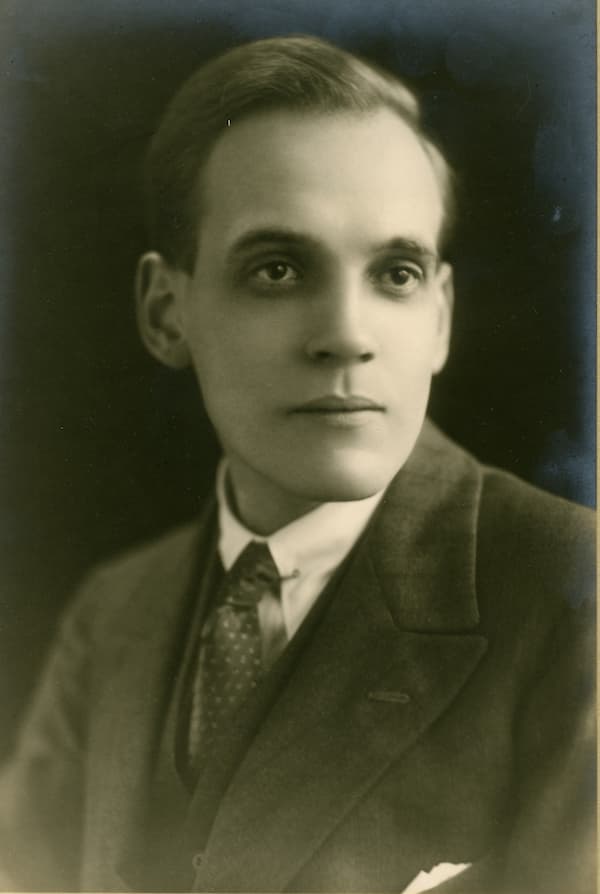
William Busch
Initially a pianist, Busch took seriously to composition only in the 1930s, first writing songs and then his acclaimed Piano Concerto. His small output mainly consisted of small forms: songs, piano music, and chamber music, although he did write a cello concerto (1941) and left a violin concerto incomplete at his early death, age 44.
This recording of Busch’s chamber music brings together many of his small ensemble works, including the Passacaglia for violin and viola (1939), a Quartet for piano and strings (1939), his Suite for cello and piano (1943), Three pieces for violin and piano (1943-44), the Elegy for violoncello and piano (1944), and A Memory for violoncello and piano (1944). The works are performed by members of the Piatti Quartet (Michael Trainor, violin; Zahra Benyounes, viola; and Jessie Ann Richardson, cello) joined by Simon Callaghan, piano, and Ashok Klouda, cello.
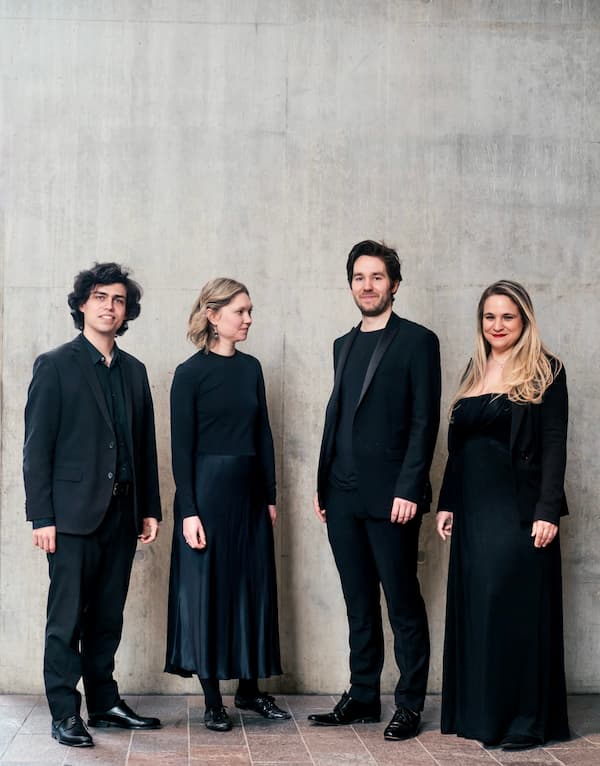
Piatti Quartet

Michael Trainor

Zahra Benyounes
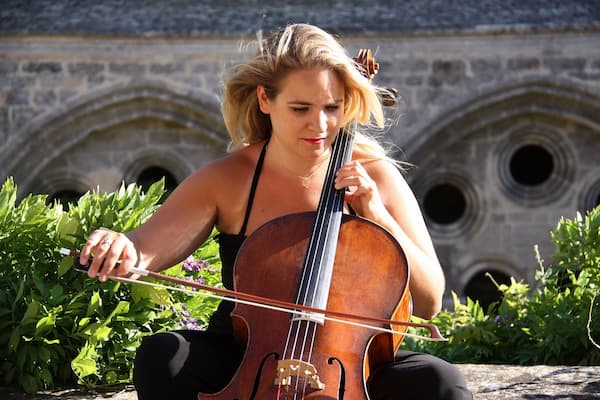
Jessie Ann Richardson
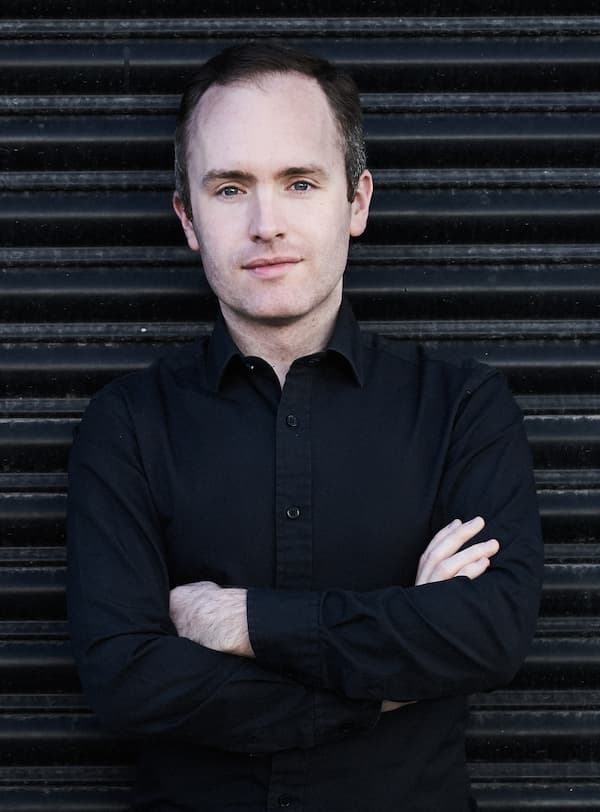
Simon Callaghan
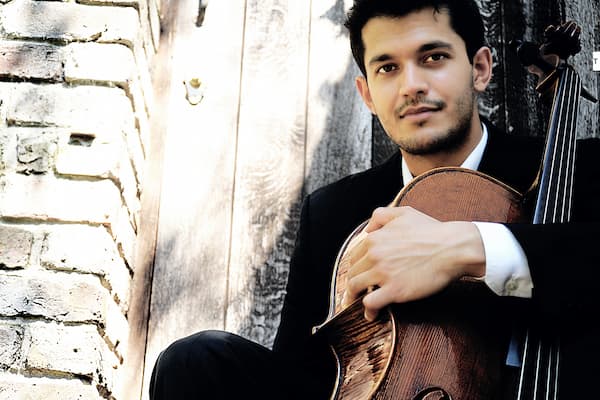
Ashok Klouda
In his obituary by John Amis, the writer noted that Busch’s music was ‘distinguished by its sensibility and warmth with a strong sense of form and a fine texture, linear rather than harmonic’. It is this emphasis on line that comes out in works such as the Elegy. Written for cello and piano, the cello assumes the ascendency, first with an extended soliloquy and then with dialogues with the piano.
William Busch: Elegy for Violoncello and Piano (Ashok Klouda, cello; Simon Callaghan, piano)
Other works, such as A Memory, written for Elizabeth Poston, also for cello and piano, bring a hazier side to the fore. It’s about memory but also about reminiscence and nostalgia. The opening is filled with a sense of distance, but the memory, in the end, is troubled and sorrowful.
The heart of the chamber music is his piano quartet. Written for piano and strings, his innate lyricism rings through but is constrained by the conciseness of each movement. The first movement gives us a contrast of two themes, one energetic and the other more tranquil. The second movement is based on a lament, with the solo violin rising to the fore. The scherzo changes character with an impetuous theme and a quieter contrasting trio. The last movement, a theme with 12 variations, gives Busch an opportunity to show what he can do with a ‘solemn, stately theme’. To round out the work, the first bars of the first movement are repeated at the end, leading to the triumphant conclusion.
The abbreviated life of William Busch and the potential shown in these chamber works, particularly in this series of new recordings on Lyrita (already issued: Songs, Complete Piano Music, and the Cello and Piano Concertos) brings this all-too-soon forgotten master back into the limelight.
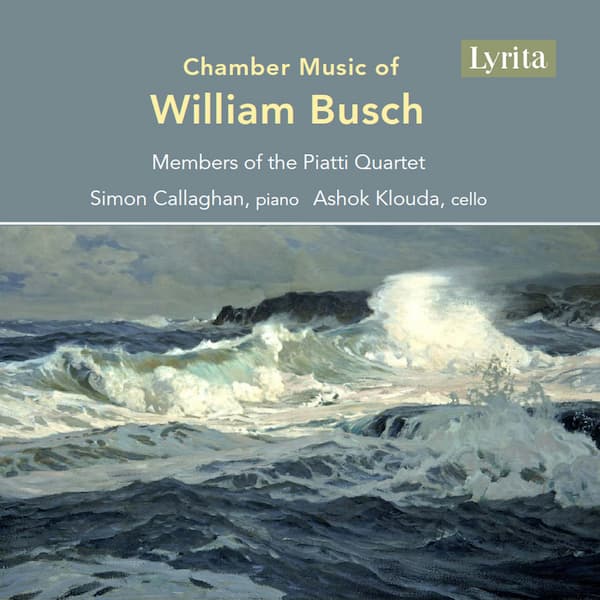
Chamber Music of William Busch
Members of the Piatti Quartet’; Simon Callaghan, piano; Ashok Klouda, cello
Lyrita Records SRCD 439
Official Website
How Conductors Explain Conducting
by Janet Horvath, Interlude
We’re in luck. Several conductors have shared their theories about how to conduct. Richard Strauss for example, who was not only a wonderful composer but also an exacting conductor, published these instructive Ten Golden Rules for the Album of a Young Conductor in 1927. We published them in 2015 but many of them bear repeating here:
• Remember that you are making music not to amuse yourself, but to delight your audience.
• You should not perspire when conducting. Only the audience should get warm.
(My teacher Janos Starker used to say, “Don’t be so moved. Move your audiences.”)
• Never look encouragingly at the brass except with a brief glance to give an important cue.
(Richard Wagner quipped, “Never look at the trombones…It only encourages them.” This quote is also attributed to Strauss!)

• But never let the horns and woodwinds out of your sight. If you can hear them at all, they are still too strong.
• It is not enough that you yourself should hear every word the soloist sings. You should know it by heart anyway. The audience must be able to follow without effort. If they do not understand the words, they will go to sleep.
• When you think you have reached the limits of prestissimo, double the pace.
Some conductors do accelerate to unplayable tempos. I’ve experienced it! Strauss later, in 1948, changed his mind: Today I should like to amend this. Take the tempo half as fast.
Conductor and legendary pianist Daniel Barenboim seconds that notion:
“The tempo is the suitcase. If the suitcase is too small, everything is completely wrinkled. If the tempo is too fast, everything becomes so scrambled you can’t understand it.”

Herbert von Karajan, the famed conductor of the Berlin Philharmonic added, “Quick music sounds dull unless every note is articulated.”
Renowned composer and conductor Gustav Mahler agreed, “If you think you’re boring your audience go slower not faster.”
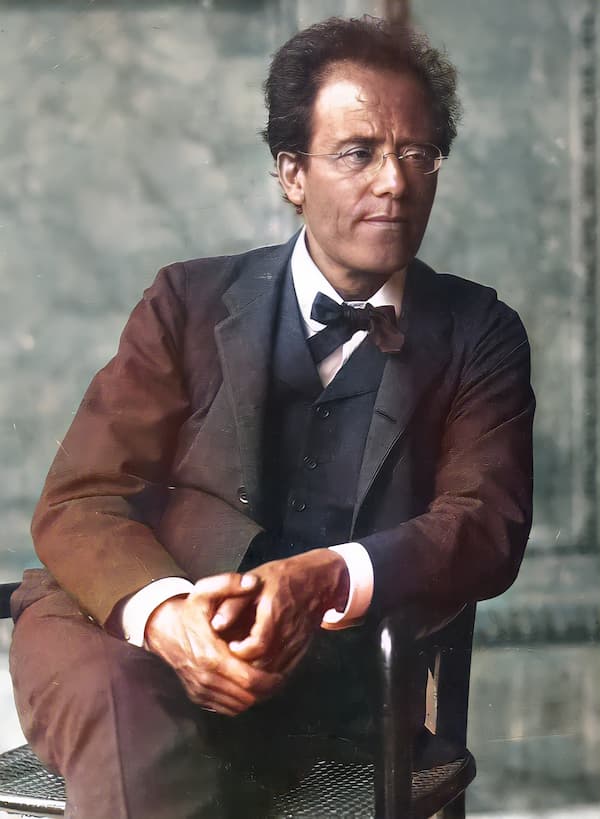
Gustav Mahler
There are a lot of opinions on how to interpret music and there are often differences in timing and tempo. Take Beethoven’s famous opening to his Symphony No. 5. I think you’ll be surprised by the versions of the first four bars from Carlos Kleiber, Claudio Abbado, Herbert von Karajan, Pierre Boulez, Bruno Walter, and John Eliot Gardiner. Carlos Kleiber with Vienna plays in a refined style, while Pierre Boulez leads a diabolically slow opening to the 5th.
Comparing 5 conductors VERY different openings of Beethoven 5th Symphony (& why they chose that)
Aside from being a timekeeper, what more does a conductor do? During an interview when asked this question, Sir Simon Rattle responded, “It’s one of the great fake professions…We are nothing without the orchestra…”
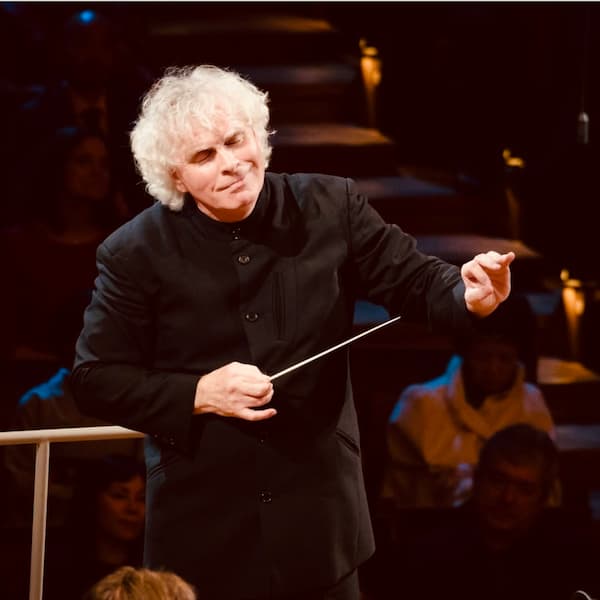
Sir Simon Rattle
Simon Rattle | What Does A Conductor Actually Do?
South Korean pianist and conductor Myung Whun Chung recently elaborated,
“A conductor almost by definition is a strange animal; he is the only musician on stage that makes no sound, yet he is responsible for everyone else’s. I often would like to think of myself as just a colleague or collaborator with the other musicians, but ultimately, we must come together to be the truthful messengers of the composer we play – and make their music come alive!”
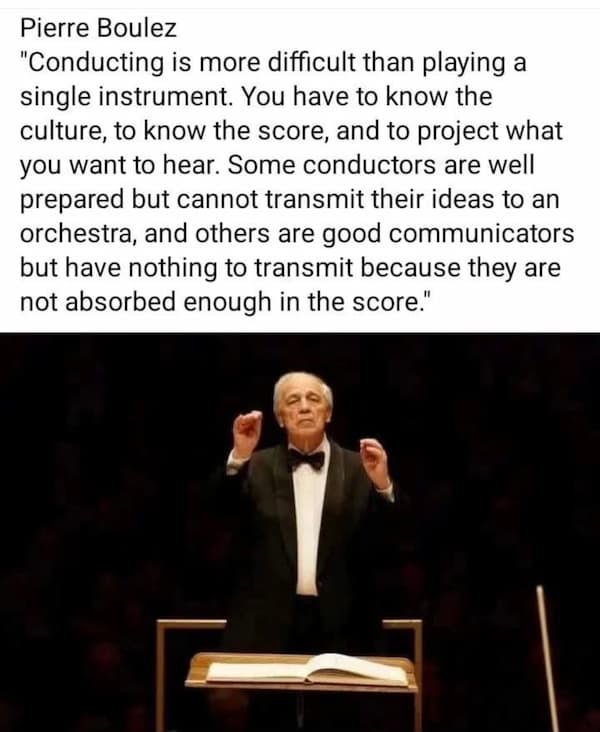
Like other professions, sometimes there’s a domineering and controlling boss. We orchestral players have been subject to heavy-handed conductors, ones we disagree with, or even incapable ones we must ignore.

We’re surprised that Herbert von Karajan, the maestro with a legendary sound, who was an autocrat, once said, “The art of conducting consists in knowing when to stop conducting to let the orchestra play.”
And this is fascinating. Simon Rattle on Karajan:
Simon Rattle on Herbert von Karajan
Leonard Bernstein, who was the music director of the New York Philharmonic from 1957-1970 and recorded with them until the end of his life, puts it in a nutshell,
“Conducting is like making love to a hundred people at the same time.”
The wonderful thing about music-making is that each orchestra has a personality and will sound different depending on the maestro in front of them. And we can tell from the first upbeat in the music whether the leader is any good. One conductor will inspire a refined, polished sound while another will coax a more robust and aggressive quality, and everything is reflected through the different people onstage.
Conducting gestures vary. The stick or hand technique is essential, but every gesture, facial expression, and overall body language matters.
Here’s an illustration:
Breaking down orchestra conducting gestures to show you what they mean
Many conductors have an affinity to certain music and a predilection for conducting those works. Our former music director Osmo Vänskä, for example, was terrific with the works of Jean Sibelius but not comfortable with French music. The Minnesota Orchestra’s complete recordings of all the Beethoven Symphonies are considered one of the best, especially of the 4th and 5th symphonies. Other wonderful interpreters include Otto Klemperer, Riccardo Chailly, with Leipzig Gewandhaus orchestra, and Carlos Kleiber. Wilhelm Furtwängler’s Beethoven No. 9 performance at the Bayreuth Festspielhaus live in 1951 is notable, and Karajan of course.
Watch this rare live video of excerpts of Beethoven Symphony No. 9 being rehearsed and performed by Herbert von Karajan and the Berliner Philharmoniker. It’s their New Year’s Eve concert of 1977 and was the first ever to be broadcast live.
Excerpts of Beethoven’s 9 rehearsal and performance by Herbert von Karajan (1977)
Some composers inspire controversy, and Maher was certainly one of them. Gustav Mahler, the Vienna Philharmonic and Vienna Opera conductor from 1898-1901 and beyond, is quoted as saying, “A symphony must be like the world. It must contain everything.” Admired Mahler interpreters include Leonard Bernstein, who was critical in reviving Mahler’s music.
Claudio Abbado, Klaus Tennstedt, Rafael Kubelik, and Sir Simon Rattle, who says, “The Mahler virus is incurable,” are also noted Mahler interpreters. But here’s a caveat from von Karajan.
“Mahler’s music is full of dangers and traps, and one of them, which many fall into, is over sensualizing the thing until it becomes sort of …kitsch.” (‘Kitsch’— when art is considered in poor taste due to garishness or sentimentality.)
From Maestro: Encounters With Conductors of Today
Helena Matheopoulos book “Maestro” consisting of interviews with the world’s twenty-three top orchestral conductors.

Conductors tend to disagree on this subject too. One’s tasteless interpretation is another’s deep revelation.
Strauss even said so, “Must one become seventy years old to recognize that one’s greatest strength lies in creating musical kitsch?”
You might ask, can an orchestra play without a conductor? Of course we can.
I recently came across an outstanding orchestra that plays without a conductor. Now don’t get me wrong. There is a long tradition of smaller ensembles, chamber orchestras, that play without a conductor. In fact, we have one here in the Twin Cities of Minneapolis and Saint Paul—the Saint Paul Chamber Orchestra. Their stellar performances often lead me to say, “they must be psychic!” as they do not only relegate themselves to so-called classical repertoire of Haydn and Mozart, but they play challenging contemporary works such as Bartók Divertimento, with aplomb and brilliance.
The Going Home Project Orchestra based in Korea plays large-scale works without a conductor including, Stravinsky Rite of Spring, an exceedingly complex work with difficult rhythms and tempo changes. Uncanny. I was flabbergasted at their brilliance as well as their impeccable ensemble. The famous bassoon opening is gorgeous, and the playing of the orchestra throughout is virtuosic.
Self-conducted Live Performance of “Le Sacre du Printemps”
But the maestro can make magic happen onstage and then it’s inexplicable even to us. Whatever the interpretation we agree with von Karajan,
“To be involved professionally in a thing as creative as music is a great privilege and we have a duty to make in such a way that we can help bring pleasure and a sense of fulfillment to those who are not so fortunate {to be able to play music}.” From Osborne’s Conversations.
I hope this explains conducting. But if you’d like to know more, here is a delightful interview with Simon Rattle, who speaks candidly about his art.
Friday, March 7, 2025
Ravel at 150: A Legacy of Innovation
by Georg Predota
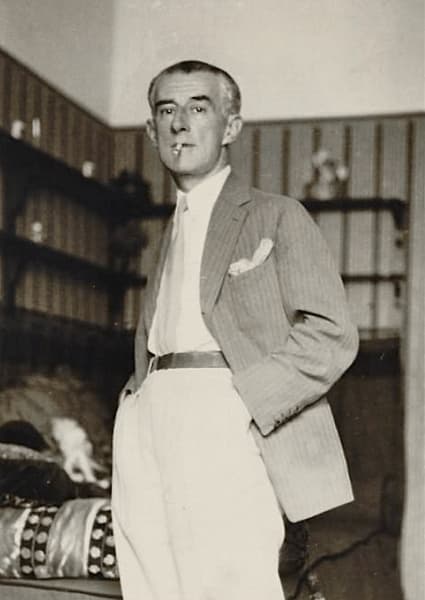
Maurice Ravel
150 years ago, on 7 March 1875, the small village of Ciboure in the Basque region of France saw the birth of Maurice Ravel (1875-1937). Son of a Swiss engineer and a Basque mother, Ravel would become one of the most significant and innovative composers of the early 20th century, bridging the late Romantic tradition and the modernist impulses of his time.
Initially trained at the Paris Conservatoire, his music reflected a cosmopolitan sensibility, imbued with meticulous craftsmanship that earned him a reputation as a “musical jeweller.”
His oeuvre is characterised by its diversity and technical brilliance in a compositional style that often juxtaposes clarity and complexity. Revealing an almost obsessive attention to detail that frequently belies the effortless beauty of his melodies, Ravel’s music conveys a profound emotional restraint that often masks deeper sentiments beneath a polished surface.
As we celebrate his 150th birthday, we honour a composer whose masterful blend of innovation, emotional depth, and extraordinary craftsmanship forever shaped the landscape of classical music.
Maurice Ravel: Gaspard de la nuit
Formative Years
“Throughout my childhood,” Maurice Ravel once said, “I was sensitive to music. My father, much better educated in this art than most amateurs are, knew how to develop my taste and to stimulate my enthusiasm at an early age.” Maurice was deeply devoted to his mother, and his earliest memories involved her singing folk songs to him. He did not receive any formal schooling at an early age, but the family’s small apartment in Paris did house a piano.
Encouraged by his father, Maurice began piano lessons with Henry Ghys and soon demonstrated an extraordinary ear, improvising and composing small pieces even before formal training fully took hold. His teacher later recalled that “his conception of music is natural to him and not, as in the case of so many others, the result of effort.” By age 14, Ravel entered the Paris Conservatoire, initially as a piano student, but his true passion soon shifted toward composition.
Maurice Ravel: Shéhérazade
Formal Education

Ravel and his parents
Ravel’s relationship with the Conservatoire, according to scholars, “was marked by his independent spirit and refusal to adhere to its rigid expectations.” The young student found his inspiration outside of formal education, particularly from the 1889 Paris Exhibition and the cultural atmosphere of the time.
During these formative years, Ravel befriended fellow student Ricardo Viñes, a Spanish pianist who introduced him to Iberian music and avant-garde ideas, further broadening his horizons. He explored a wide range of musical and literary influences, including the works of composers like Satie, Debussy, and Chabrier, as well as writers such as Poe and Mallarmé. In fact, Ravel became part of a creative group called “Les Apaches” (The Hooligans) in the early 1900s, which fostered collaboration among artists, musicians, and writers.
Maurice Ravel: Rapsodie espagnole
First Performances
When Ravel conducted the first performance of his Shéhérazade overture in 1897, he was called a “mediocrely gifted debutant.” Two years later he composed his first piece to become widely known, the Pavane pour une infante défunte. One way or another, Ravel appeared calmly indifferent to blame or praise. The only opinion of his music that he truly valued was his own, as he was a “perfectionist and severely self-critical.”
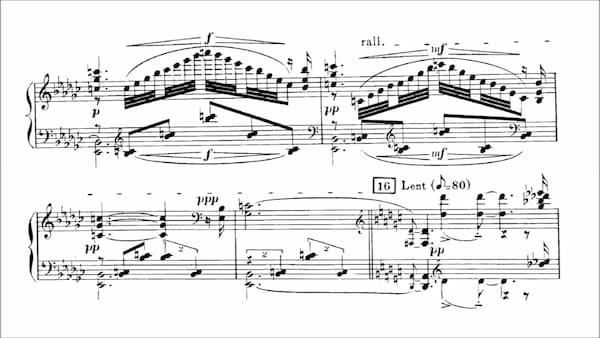
Maurice Ravel’s Sheherazade
At age 20, as biographer Burnett James reports, “Ravel was self-possessed, a little aloof, intellectually biased, and given to mild banter. He dressed like a dandy and was meticulous about his appearance and demeanour.” He continued to struggle at the Conservatoire, failing to secure the Prix de Rome despite multiple attempts between 1901 and 1905. However, his time there under Gabriel Fauré’s tutelage “honed his craft and instilled a lifelong devotion to clarity and refinement.”
Maurice Ravel: Pavane pour une infante défunte
International Reputation
By the early 20th century, Ravel had begun to distinguish himself in France with works like Jeux d’eau, a shimmering tour de force that showcased his innovative approach to texture and harmony. However, it was the premiere of his orchestral suite Daphnis et Chloé in 1912, commissioned by Serge Diaghilev for the Ballets Russes, that marked a turning point. This lush, expansive work, with its vivid orchestration and rhythmic vitality, captivated audiences and critics alike, and cemented Ravel’s status as a master of colour and narrative in music.
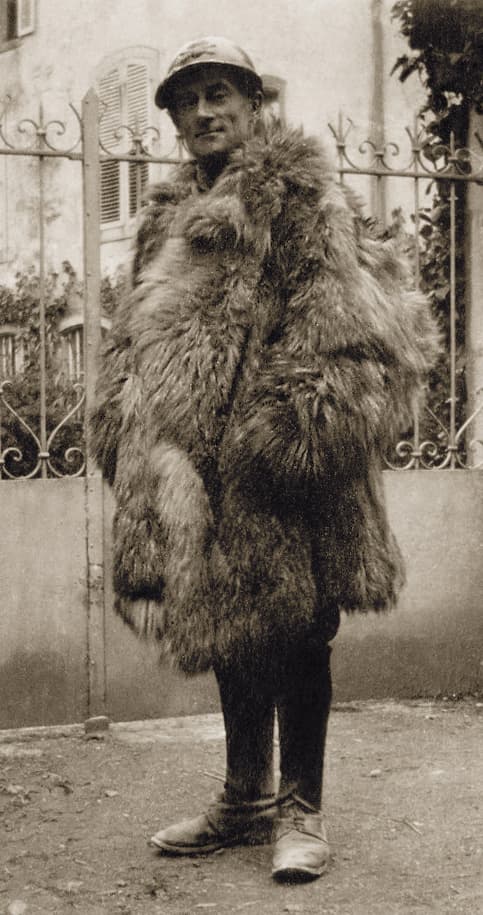
Maurice Ravel as a soldier in 1916
According to Roland-Manuel, Ravel was working on a Piano Trio when World War I broke out. In fact, Ravel was working on a number of projects, including a piano concerto based on Basque themes, two operas, a symphonic poem, and two major piano works. However, his compositional activity slowed significantly during the war, which he spent as a truck driver and ambulance assistant near the Verdun front. Suffering from exhaustion, dysentery, and the devastating loss of his mother in 1917, the war years left an indelible mark on his music and his psyche.
Maurice Ravel: Daphnis et Chloé “Suite No. 2”
After 1918
With the notable exception of Le Tombeau de Couperin, the effects of the war left a distinct toll on Ravel’s creativity. Amidst national and personal trauma, Ravel began to cloak his personal sorrow in refined artistry, which some commentators interpreted as a coping mechanism. Focusing on neoclassical restraint and dance forms, Ravel aimed for greater introspection and simplicity, as La Valse might well be read as a haunting commentary on a shattered Europe.
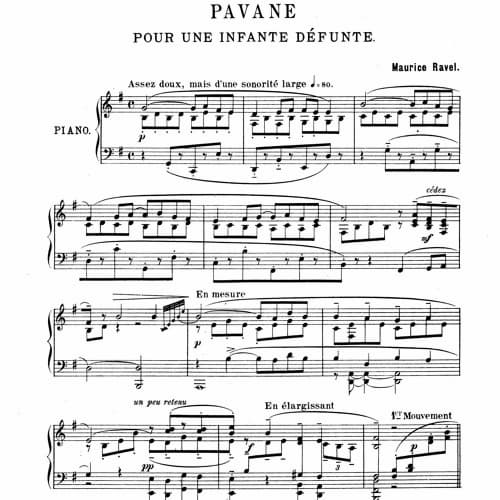
Maurice Ravel’s Pavane pour une infante defunte
After Debussy’s death in 1918, Ravel was regarded as France’s leading composers. He was officially recognised by the French state but publicly refused the Légion d’Honneur in 1920. His new-found celebrity also alienated him from some of his colleagues, particularly from Satie and some members of Les Six. As Barbara Kelly writes, “Ravel emphasised his isolation by moving 50km west of Paris, where he lived with his cats and was looked after by his housekeeper until his final illness.”
Maurice Ravel: Le Tombeau de Couperin
International Profile and Decline
Internationally, Ravel was celebrated as a modernist icon and he performed and lectured to packed houses in New York and Boston. American audiences were particularly enchanted by Boléro, which became a global sensation. His interactions with Stravinsky, Gershwin, and Vaughan William earned him accolades in England, Russia, and beyond, and his meticulous artistry and ability to fuse French elegance with universal appeal secured his place as a towering figure on the international musical landscape.
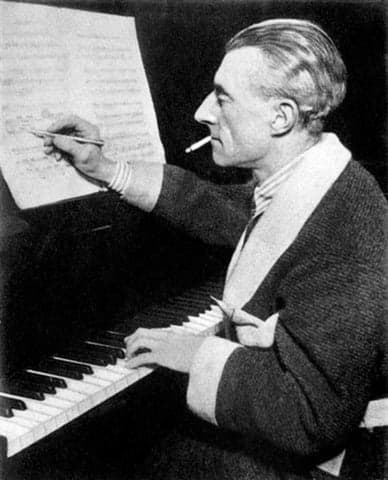
Maurice Ravel at the piano
By 1927, Ravel’s health had alarmingly deteriorated, and while he could still hear and compose music in his head, he gradually lost the ability to write it down. As he reported, “my mind is full of ideas, but when I want to write them down, they vanish.” Injured in a taxi accident in 1932, Ravel consulted a number of neurologists and underwent exploratory brain surgery. He died aged 62 in the early morning hours of 28 December 1937. The exact cause of Ravel’s death is still much debated, as are attempts to discover Ravel’s neurological decline in his later compositions.
Maurice Ravel: La Valse
Legacy
Ravel’s legacy as a composer is a testament to his singular ability to synthesise tradition and innovation. His meticulous craftsmanship, often likened to that of a watchmaker, produced a body of work that balances classical forms with a modernist sensibility, pushing harmonic and technical boundaries while retaining elegant coherence. His mastery of orchestration became a benchmark for further explorations of colour and texture in film music and beyond.
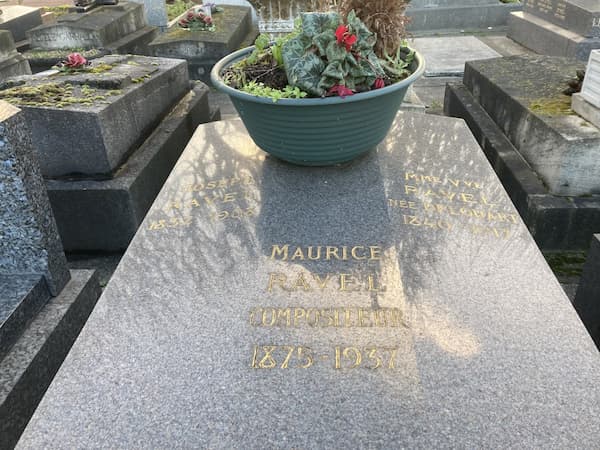
Ravel’s grave
Beyond specific compositional techniques, Ravel’s frequently veiled profound sentiment and emotional restraint beneath a highly polished surface, “evoking the universal through the particular.” By using cross-cultural influences woven into a distinct French idiom, Ravel is lauded as a precursor of a globalised aesthetic subsequently emerging in composers like Messiaen and Takemitsu. In the 21st century, Ravel remains a towering figure whose contributions continue to inspire and challenge the boundaries of musical expression.
One of his closest friends, the exceptional pianist Marguerite Long famously wrote, “Maurice Ravel is reserved, sacred, and distant with unwelcome visitors, yet he was the surest, most delicate, and most faithful of friends. By his exterior appearance, his witticisms, and his love of paradoxes, he has often contributed to crediting the myth of spiritual indifference, but, in spite of these appearances, this great prisoner of perfection hid a sensitive and passionate soul.”
Chow Ching Lie : Journey in Music
by Georg Predota, Interlude
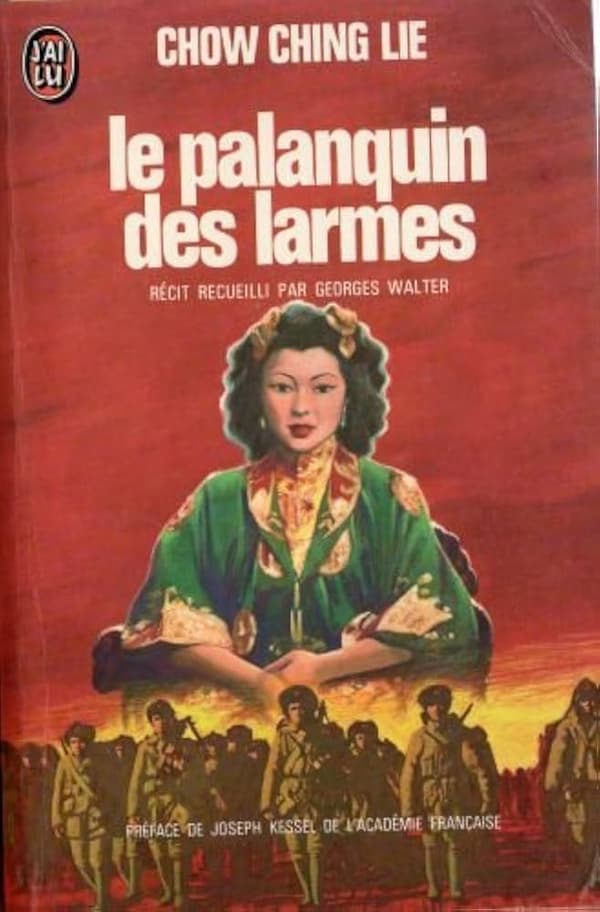
Chow Ching Lie’s personal memoir ‘Le Palanquin des Larmes’ (Journey in Tears)
Forced into an arranged marriage at the age of 13, becoming a mother by 14 and a widow at age 26, her memoirs detail her journey from a child bride to fulfilling her dream of becoming an internationally recognised pianist. It is not just a tale of personal triumph over adversity but also a critical look at gender roles, societal expectations, and a quest for personal freedom.
Chow Ching Lie Documentary Trailer
Yellow River Concerto
Her “Journey in Tears” is also a “Journey in Music,” as it becomes a source of solace in her darkest times and simultaneously a tool for empowerment. It symbolises her resilience, her fight for autonomy, and her way of reclaiming her identity. She and her two children find a new home in Paris, and by connecting with people across cultures, music becomes a profound commentary on the power of art to heal, transcend, and transform lives.
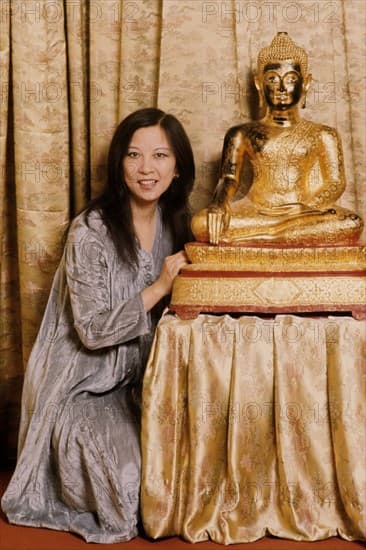
Chow Ching Lie
For Chow, who passed away on 16 February 2025, Music was always woven into the narrative of her life, highlighting significant emotional or transformative movements. It served as both a backdrop and a reflection of her personal evolution. As such, we decided to choose compositions that found thematic resonance with her life’s journey, from the melancholy of early struggles to the hopeful notes of her later achievements.
Yellow River Concerto
The Lark
Chow’s enchantment with music started at the age of six when a student at her school sat down in front of a piano to give a small recital. She writes, “this strange, shining black object stood at the centre of the stage… Suddenly, her hands flew over the keyboard like enchanted birds, and the sound that was emitted from that strange black object was more beautiful than anything I had ever heard.”
Her father rented a piano and provided first lessons to her and her sister. She managed to make considerable progress by the end of her first year. She first appeared in front of an audience at the age of 10, performing Glinka’s “Lark.” That composition would later serve as a metaphor for her newfound freedom and the sense of lightness she felt in Hong Kong. Away from the oppressive environment she had known, Chow felt that she could convey not just her technical skills but her personal joy and relief.
Glinka/Balakirev: The Lark
Moonlight Sonata
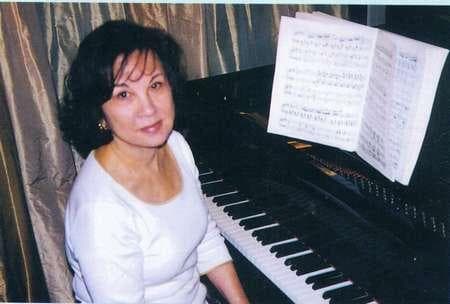
Chow Ching Lie
Beethoven’s “Moonlight Sonata” holds a special place in Chow Ching Lie’s narrative, serving as a poignant emblem of her inner world amidst the external chaos of her life. She first played the work when she was still a young girl, trapped in the confines of her arranged marriage. For Chow, the opening movement allowed her to express the deep-seated melancholy and yearning for freedom that she was unable to voice in her real life.
The “Moonlight Sonata” reappears at various junctures, each time marking a significant milestone in her life. When she performed the work at a concert in Hong Kong, her first major performance after departing from Shanghai, it became more than just a piece of music. For Chow, it captured her journey from darkness into light, from silence to expression, embodying the essence of her transformation through music.
Ludwig van Beethoven: Piano Sonata No. 14, Op. 27 No. 2 “Moonlight”
Clair de Lune
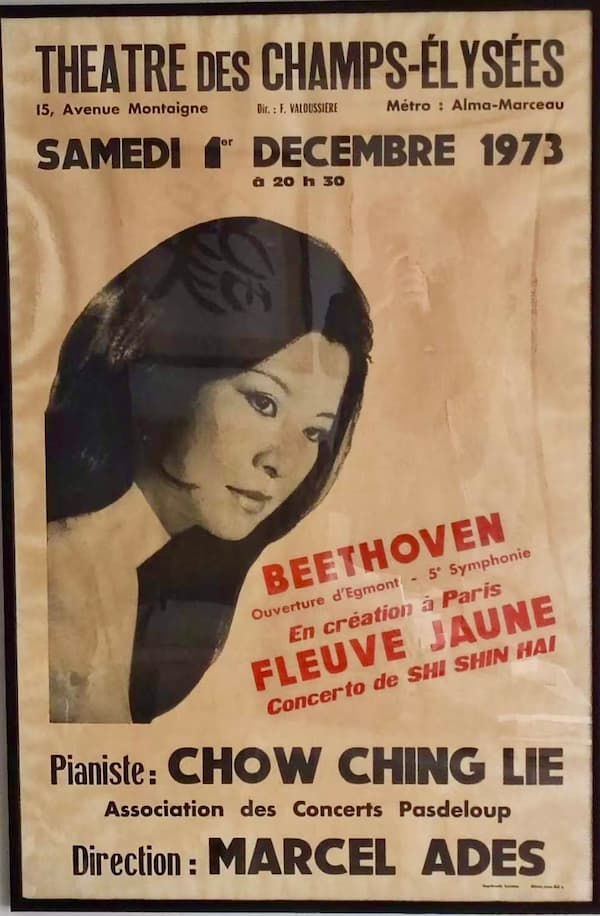
Chow Ching Lie’s performance poster in December 1973
Debussy’s “Clair de Lune” becomes a significant piece in Chow’s musical journey, particularly after her move to France. She describes her first encounter with that composition as “a revelation, as the music’s delicate and nuanced expression resonated with my soul.” Her performances of “Clair de Lune” highlight several key moments in her life, most notably at a concert in Paris.
For Chow, “Clair de Lune” became a medium through which she could share her journey of healing and self-discovery. Every note seems to echo her newfound peace and love for life, in stark contrast to the tears of her earlier years. As she called it, “this music was a way to heal from past wounds while embracing the beauty of the present.”
Claude Debussy: Clair de Lune
Alla Turca
For Chow Ching Lie, the “Alla Turca” from Mozart’s A-Major sonata represents moments of great personal joy and public acclaim. It represents music that contrasts with the much more introspective pieces she had previously associated with her life’s struggles. It came to represent the playful, confident, and exuberant parts of her personality.
The “Alla Turca” is frequently mentioned in the context of teaching music, where Chow finds delight in sharing the playful energy with her students. She vividly recalls a concert in France, where she decided to lighten the programme with a performance. Apparently, the audience, initially drawn in by her interpretations of classical works, is surprised and delighted by the sudden shift to the vibrant and spirited “Alla Turca.”
Wolfgang Amadeus Mozart: Piano Sonata No. 11 in A Major, K. 331 “Alla Turca”
Ave Maria
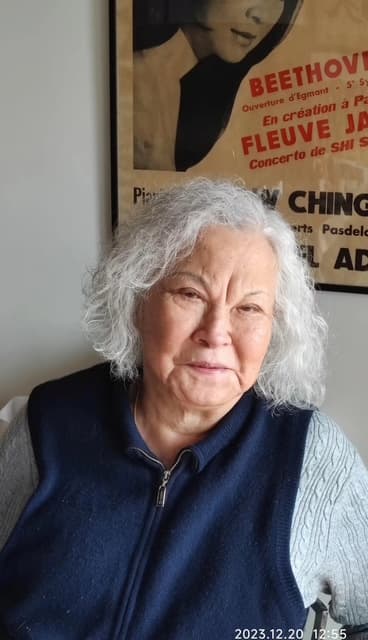
Chow Ching Lie
The ideas of music and healing in Chow’s narrative are of primary importance, as music transforms her suffering into resilience and purpose. Her pursuit of music emerges as her salvation and as a means of emotional escape and eventual physical liberation. Music was not simply an art form but a powerful healing force.
The healing power of music operates on both a personal and symbolic level. Personally, it offered a way to process trauma, and symbolically, music became the conduit for transcending cultural and personal wounds. During a visit to the pilgrimage site of Lourdes, Chow was so touched by what she saw that she spontaneously started to play the “Ave Maria.” The very same piece sounded when Chow played in public for the last time; tellingly, the performance took place in a hospital under the title “Music and Healing.”
Chow Ching Lie’s Hospital Performance
Throughout Chow Ching Lie’s life, music transcended mere art and became her voice of liberation, her sanctuary amidst adversity, and ultimately the melody through which she transformed her story from one of tears into one of triumph.